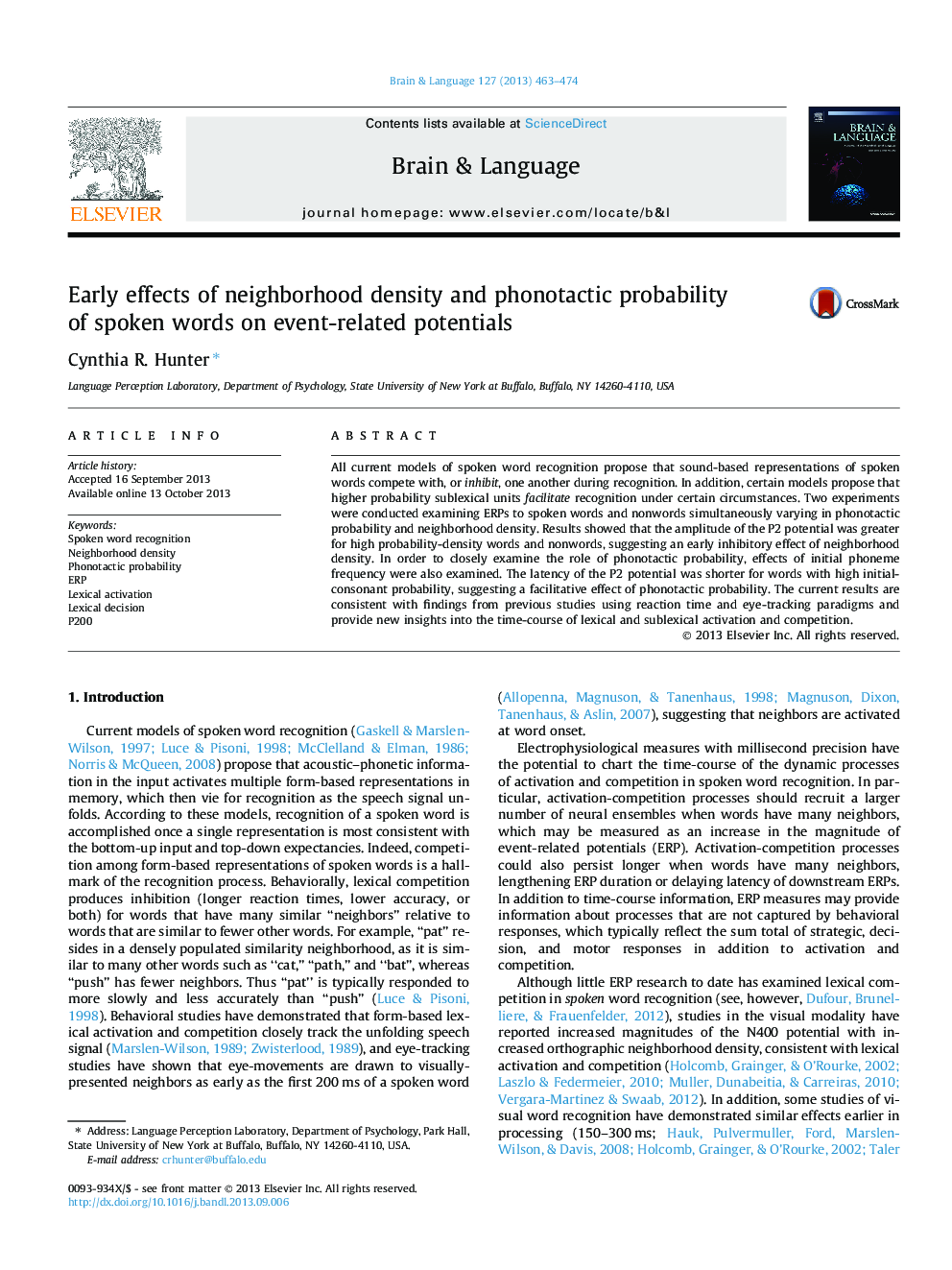| Article ID | Journal | Published Year | Pages | File Type |
|---|---|---|---|---|
| 10456392 | Brain and Language | 2013 | 12 Pages |
Abstract
All current models of spoken word recognition propose that sound-based representations of spoken words compete with, or inhibit, one another during recognition. In addition, certain models propose that higher probability sublexical units facilitate recognition under certain circumstances. Two experiments were conducted examining ERPs to spoken words and nonwords simultaneously varying in phonotactic probability and neighborhood density. Results showed that the amplitude of the P2 potential was greater for high probability-density words and nonwords, suggesting an early inhibitory effect of neighborhood density. In order to closely examine the role of phonotactic probability, effects of initial phoneme frequency were also examined. The latency of the P2 potential was shorter for words with high initial-consonant probability, suggesting a facilitative effect of phonotactic probability. The current results are consistent with findings from previous studies using reaction time and eye-tracking paradigms and provide new insights into the time-course of lexical and sublexical activation and competition.
Keywords
Related Topics
Life Sciences
Neuroscience
Biological Psychiatry
Authors
Cynthia R. Hunter,
